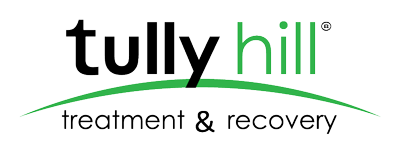When you or a loved one decide to seek help for an addiction or substance issue, it can be overwhelming to do the research and then make the right decision. Often times, deciding to addressing entering treatment will result in leaving one’s lifestyle, or perhaps having a less-than-pleasant or maybe a surprisingly-pleasant interaction with your loved one if you are seeking help for them. After researching what is available, what is covered by insurance, and what will fit your needs, you then face adjusting to new surroundings, institutional rules, and then the stigma that comes with asking for help with a substance issue. Finally, you then have to go and engage in learning new things, addressing things about yourself, and utilizing skills to develop new patterns.
I am not a person who has struggled with an addiction but I have close members of my family and friends that have struggled in varying ways. I hope to clearly describe aspects of different levels of care and talk about the benefit of engaging in treatment in hopes that struggling people, or their loved ones, can benefit from some insight into the process of getting help, changing their lives, and hopefully creating a better future. To do this, I have enlisted the help of people who have been through treatment and have offered unique insights into how it helped them change their lives for the better.
Levels of care
One of the first things I think it is important to consider, after working in the industry and hearing so many stories about individuals’ experiences, is information about what is referred to as “level of care.” This is often shortened to LOC. Levels of care refers to different types and intensities of care when addressing addiction or substance abuse issues. The levels of care often progress in the following way from most intensive, or “the beginning,” to the least restrictive: Detoxification, Rehabilitation or Residential, Partial Hospitalization Program, Intensive Outpatient, and General Outpatient programs.
Detoxification
The detoxification (“detox”) level is generally the first step for those who are struggling with dependence and addiction to substances. This level can include medical staff around the clock in order to provide support for individuals struggling with initial experiences referred to as withdrawal. Withdrawal from alcohol can be deadly or result in seizures which are best supported with trained medical staff. Opiate, stimulant, and other substances can also cause withdrawal symptoms that are difficult to manage on one’s own, so comfort medication, support, and supervision are provided in a safe environment to aid in the beginning periods of addressing dependence on a substance. Time in the detox level of care can vary and is often dependent on a myriad of factors. In my experience (working in a medical detox facility for a year during my graduate school internship), the stays can range anywhere between 3 days and beyond 28 days, depending on the individual’s needs.
Residential
The rehabilitation and residential levels can be described by the same descriptor. Often, these are extended care from the detox level that allow for more therapeutic interventions and time for education about coping skills, patterns, relapse triggers, relapse prevention, and introductions to supports such as 12-step fellowships or other means to address substance dependence. This is often where group sessions and individual care can occur over a longer period to continue support in the early days of someone’s recovery. This period can last anywhere between 7 and 28 days.
Partial Hospital Program (PHP)
The partial level of care (also known as a partial hospital program) is often in communities and consists of group therapy, individual therapy, and experiential therapies that continue the learning and practice of new skills, recovery skills, and integrating the person back into the community. PHP levels of care traditionally involve spending the better part of the day in a treatment facility and returning home at the end of the day to return to the facility the next. A newer trend in drug and alcohol treatment is PHP with boarding. In this model, the individual spends the day at a treatment center and then lives in a supervised housing setting with other clients who are early in their sobriety. This stage often begins with the client reintegrating into their daily routines and experiencing the community with the support and supervision of trained staff.
Intensive Outpatient (IOP)
Intensive Outpatient levels of treatment can include an abridged version of the PHP level of care. This can range from attending treatment during any time of day for a shorter period than in the PHP level of care, sometimes three times a week, and can take place in the morning or evening hours. During the IOP level of care, clients are encouraged to attend things such as meetings, work, volunteering, and family events with the continued support of trained staff for support and assistance processing events that could be overwhelming, stressful, successful, or new. Clients are provided with support from peers and clinical staff in order to reflect on their experiences, process how they managed stressors, and explore what they feel they may still need to dedicate effort to doing in order to bolster their recovery. The intensive outpatient level can last one month or longer, depending on the program and funding (or insurance coverage).
Outpatient
The outpatient level can be where journeys into change, recovery, and sobriety begin. Outpatient treatment generally involves seeing a therapist, counselor, social worker, or psychologist individually. It can also include weekly therapy groups to provide support. This level of care can last as long as needed by the client (and how long funding/insurance allows). Working individually with a therapist or a group can help maintain change behaviors and also provide accountability and structured time to discuss successes and setbacks.
Post-Acute Withdrawal Syndrome (PAWS)
If clients are able to engage in all of the above-mentioned levels of treatment, it could last three months or longer. PAWS is a period of prolonged withdrawal that occurs after the last instance of substance use and after the initial withdrawal symptoms have resolved. PAWs can last weeks to months, with symptoms such as pain, irritation, depressed mood, mood swings, anxiety, irritation, lack of focus, and others, experienced by the person in early recovery. The symptoms typically tend to lessen within 90 days but can make it difficult for individuals to tolerate the feelings and experiences that come after not using substances for a period of time.
What makes for helpful treatment
Drug and alcohol treatments have been around in some form or another for approximately 70 years. These treatments arose out of a general need in the community. In speaking with a friend of mine who is in Alcoholics Anonymous (AA—a support group and fellowship for people seeking sobriety), he reported that the founder and author of the AA text would visit individuals in hospitals and work with them on what came to be known as The 12 Steps. Some of the treatment has evolved since then and includes other substances, such as opiates, hallucinogens, hypnotics, stimulants, and others. A lot of blogs and articles on the internet talk about what factors in treatment seem to be most helpful. These include evidenced-based practices as their model of treatment, such as CBT (cognitive-behavioral therapy), trained clinicians, as well as new models such as relapse prevention models like the one developed by Terence Gorski.
These blogs and articles also talk about what to look for in a treatment facility that seems to be linked to more success. Therapists, counselors, social workers, and marriage and family therapists with at least a master’s degree in their credentials is advised. Clinicians can also possess clinical licenses (LPC, LMHC, LMFT, LCSW, etc.) that accounted for time spent in ongoing clinical supervision and maintaining an amount of continuing education credits after graduation. Another thing to look for in a clinical team would be a certification of a CADC (Certified Alcohol and Drug Counselor), which requires study of addiction treatment, experience with clients, as well as passing a test administered by the CADC board. Treatment teams that feature medical doctors, nurse practitioners, and physician assistants also suggest a supportive treatment facility. The staff at the treatment facility (clinically adjunctive or client supportive) may include Recovery Support Specialists (RSS) or Certified Recovery Specialist (CRS) who are peers that have gained further training in supporting others in their early recovery. Finally, vigorous aftercare planning is also an important part of a client’s experience in treatment. A treatment stay could last anywhere from three days to several months.
After that period, the rest of the client’s life begins out of treatment. Supportive networks should be established in treatment (fellowship groups, individual counseling, support groups, other community supports) and connecting to and using those supports should be emphasized in the final stages of treatment. These are areas that you can investigate and be curious about when choosing a treatment facility for you or a loved one.
When considering treatment options, the model should exist to provide structure, accountability, information, practice of new skills, and, most importantly, support for someone who decides to become sober. Considering how the person getting sober will struggle with things like cravings, along with the demands of any consequences incurred by their substance use, as well as that they no longer are using substances to cope with stressors or emotions, it is logical that they will need extra support and accountability during that time in order to minimize relapse. My recommendation would be that the facility can provide both loving support and boundaries for you or your loved one so that they can begin to craft their plan to address their future success and meet goals.
Finally, I was reading an article on the National Center of Biotechnology Information’s website (from research conducted at the University of Pennsylvania) which cited some aspects and attributes of treatment that seem to be connected to positive outcomes. Here is an excerpt from that article:
Perhaps the most robust and pervasive indicator of favorable posttreatment outcome in all forms of substance abuse rehabilitation has been length of stay in treatment. Virtually all studies of rehabilitation have shown that patients who stay in treatment longer and/or attend more treatment sessions, have better posttreatment outcomes (Ball and Ross, 1991; De Leon, 1984, 1994; Hubbard et al., 1997; Simpson 1981, 1997; Simpson et al., 1997a,b). Specifically, several studies have suggested that outpatient treatments of less than 90 days are more likely to result in early return to drug use and generally poorer response than treatments of longer duration (Ball and Ross, 1991; Simpson, 1981, 1997; Simpson et al., 1997a,b).
The Treatment of Addiction: What Can Research Offer Practice? McLellan and McKay (Penn – VA Center for Studies of Addiction and the treatment research institute at the University of Pennsylvania)
Summary
To summarize, it is important to consider where you or your loved one will spend time in order to seek supports, learn new skills, and plan to change past behaviors and forge new ones. Be a savvy consumer and interview treatment facilities and see if their services are a good fit for you so you can feel comfortable there in order to use the supports offered and grow through the use of them.







